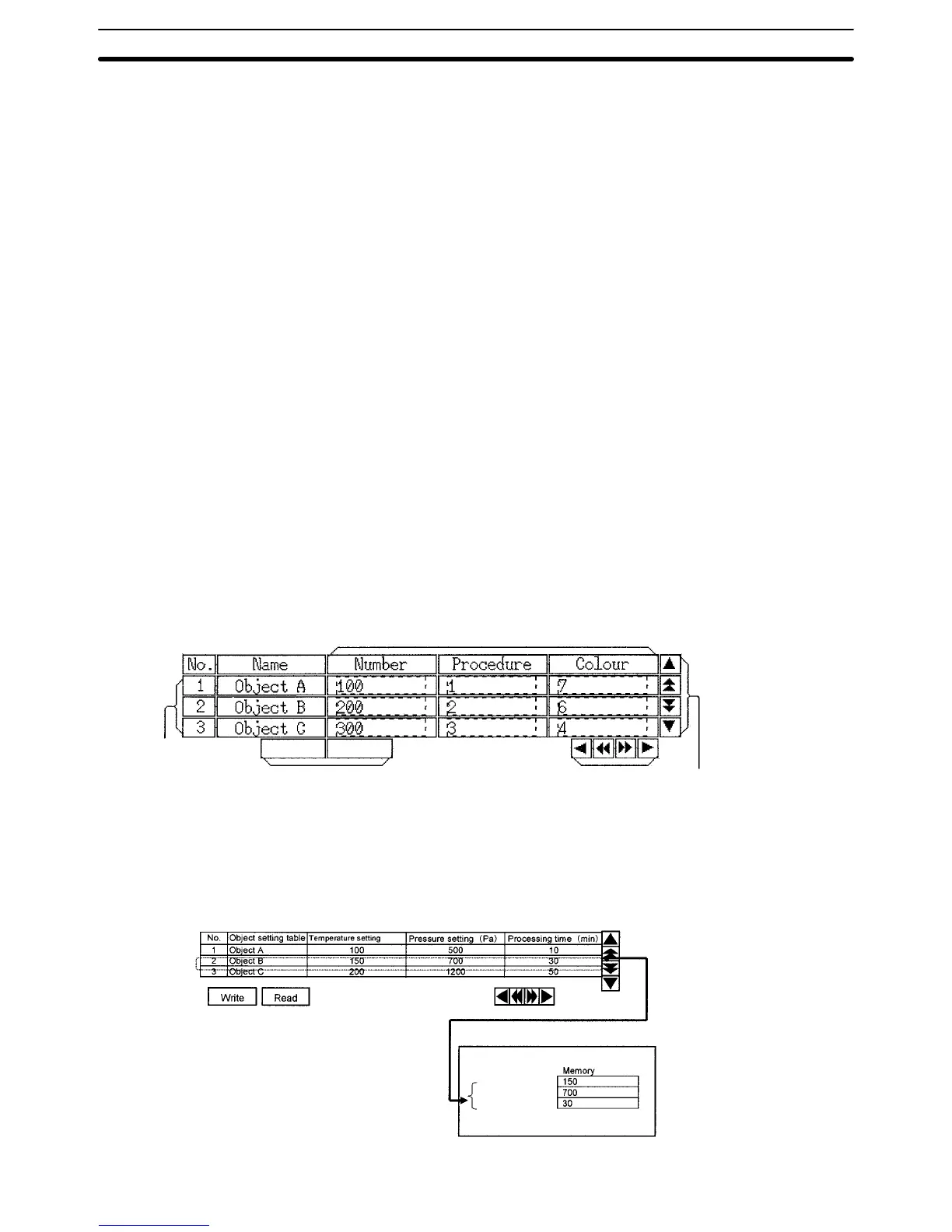2-14SectionRecipes
216
2-14 Recipes
2-14-1 Function Outline
You can write data in table format to the host (PC memory or PT memory), and
read data in table format from the host. Use this function to write multiple settings
from the PT to the host in a single operation, and to read multiple settings from
the host in a single operation.
• The data in table format (“recipe data”) consists of names and parameters (ini-
tial values). You can create multiple recipe data for a single application, and
can use it as a recipe table after storing it in a PT.
• Recipe elements consist of the specified data in table format (see above), and
dedicated recipe touch switches (Read and Write touch switches, and the
scroll touch switches). You can use recipe elements to display and edit specific
recipe data, write data to the host, or read data from the host.
• Set the initial values for parameters within data in table format using the Sup-
port Tool. After you set the initial value, you can change the parameters using
either of the following two methods.
1, 2, 3... 1. Edit each parameter individually using the pop-up window for entering val-
ues on the PT.
2. Read and write parameters from/to the host (i.e., PC or PT memory) one
record at a time using the Read and Write touch switches for recipes on the
PT.
Records
Touch Switch
Write Read
Parameters
Page & Line Scroll
Touch Switch
Records for Objects A, B, and C, which set temperature, pressure, and process-
ing time as parameters.
(°C)
Select record number 2
and press the Write
switch to write the 3
parameters for Object
B to the PC.
Temperature setting
Pressure setting
Processing time
PC
Example
